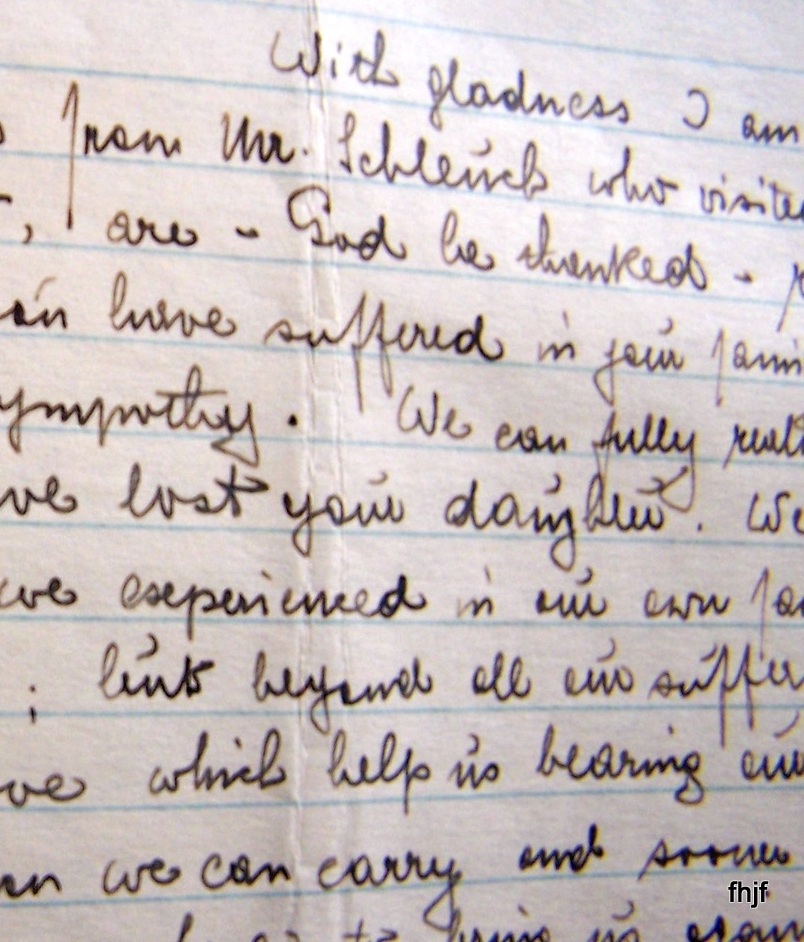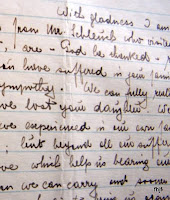Throughout this week I’m blogging on the most climactic event in all of history: the Resurrection of Jesus from the dead.
Is it true? Did the Bible get it right? Are there other plausible alternatives? Wading through Flannery O’Conner, myth-spinning fishermen, Homer’s Iliad, legendary body-snatchers, a crucified Judas, the Battle of Waterloo, and hallucinating ghost-whisperers, I’ll seek to convince you, before Holy Week, that the Resurrection is not just a good story but a literal, historical reality.
Part 1 of 7 – Two Messiahs
Part 2 of 7 – To Hell With It
Part 3 of 7 – Is the Bible Just a Myth?
Part 4 of 7 – Did Jesus Really Die on the Cross?
Part 5 of 7 – If Jesus Died on the Cross, Did He Rise Again?
Part 6 of 7 – The Bible-less Resurrection
Part 7 of 7 – What the Resurrection Means
*This series is a revamped version of the one we did last year during Holy Week*
Is the Bible Just a Myth?
First, the bad news. We have no surviving manuscripts of the original New Testament.
Zero.
All we have are copies and copies of copies. So with this seemingly scant evidence, how can we be sure that what we read in our Bibles is what was originally written down? More so, if we don’t even have the original documents, how can we know that the originals themselves were accurate accounts?
We’ll begin with an analogy. Imagine I took a sheet of paper and wrote a story covering both the front and back of the page. Now imagine I selected ten of my friends from around town, and one-by-one invited them to come over and hand-copy my original story onto their own sheets of paper. After each of my ten friends copied the story, I then burned my original text and it was never to be seen again.
Now, imagine I then gathered hundreds of people, placed these ten replicas side-by-side, and asked the crowd to compare and contrast them. After some thorough analysis the crowd concluded that the ten copies shared about 90% of the content in common. This means that while 10% of the content varied among the documents–most likely due to misspellings, substituted words, and sloppy copying–90% of the content was exactly identical. In this case, the crowd would be fairly certain that the 90% shared in common among the ten copies was in fact present in my own original document, even though they had never seen the original.
This is just the scenario with our New Testament copies. Instead of 10 replicas of the original texts, however, scholars have cataloged no less than 5,700 different New Testament manuscripts. Which means even more than our imagined crowd, we today have a very clear picture of the original New Testament.
No other text in ancient antiquity is as well testified as the New Testament. The next most abundant collection we have is of Homer’s Iliad, but we have less than 650 surviving manuscripts of the poem (the earliest of which dates back to the second century, roughly 900 years after Homer’s original.)
More impressive is the scholarly consensus that these 5,700 manuscripts, coming from many different geographical areas, share more than 98% of their content. That is, 98% of the material is precisely identical from sheet to sheet. And that 2%? Biblical scholars contend that most of the differences come from unintentional copyist mistakes. None of them seem to be intentional changes nor do they affect any major doctrine or teaching of Jesus.
Yet Christians don’t only rely on these 5,700 documents to determine the truth of Jesus’ life. We also have 18 different first-or-second century, non-Christian writers who cover the life of Christ. These include well-respected historians like Josephus, Tacitus, Pliny the Younger, and the Roman Emperor Trajan. Most of these ancient historians described Jesus as a great teacher who performed wondrous miracles, and many even described Jesus’ Resurrection.
Consider, too, the content of the Gospel accounts themselves. If a salty band of myth-making fishermen were to develop a legend about a god-man who was all-knowing and all-powerful, then they made some serious errors. They repeatedly shot themselves in the foot with their accounts.
For instance, in the Gospel of Mark, when Jesus is asked to reveal the hour of his return, he essentially replies, “I don’t know. Only the Father knows that.” On the surface at least, his response doesn’t exactly scream “all-knowing.”
Later at the Garden of Gethsemane we see Jesus wrestling with God in prayer, begging to escape his impending crucifixion. What kind of mythical hero displays this kind of apparent weakness? None of the Greek or Roman gods, to be sure.
Once on the Cross we see Jesus’ desperation on full display as he screams, “My God, my God! Why have you forsaken me?!” What kind of fabricated hero displays such hopelessness? We want gods who are strong, powerful, and resolute in the face of adversity. Who would ever concoct a deity who seems so frail, so weak, so…human?
However, most damaging to the Bible-is-fiction theorists is the identity of the earliest witness to the Resurrection. The Bible makes it very clear that the first person Jesus appeared to after rising from the dead was Mary Magdalen, a woman previously possessed by seven demons.
In the ancient world, women were considered to be the most unreliable witnesses you could find. Their testimony was not valid in court, and they occupied the lowest levels of society. So if you were attempting to make up a believable story about Jesus rising from the dead, the very last person you would choose as your lead witness would be a women of questionable reputation.
So why in the world did the Gospel authors show Jesus displaying apparent ignorance, weakness, and hopelessness? Why did they point out Mary Magdalen as the first witness, despite the doubt it would throw on their story?
Because that’s the way it really went down. Throughout his life and death, Jesus constantly displayed his humanity and Mary Magdalen, despite her poor reputation, was the first to see the risen Christ. The Gospel writers simply chose to “tell it like it is” valuing truth over plausibility..
Finally, for one more bit of evidence confirming the veracity of the Bible, there’s the dating of the texts. The most liberal Bible scholars, who put the date of Gospel authorship far away from the crucifixion, typically date the Gospels like so: Mark sometime in the 70’s, Matthew and Luke in the 80’s, and John in the 90’s. However more popular estimates move these dates earlier by as much as twenty years. Many scholars have Mark’s Gospel written as early as the 50’s or 60’s.
In addition to that, the consensus is that each of St. Paul’s letters were written before the first Gospel was penned, placing all of them sometime during the 50’s. And it’s in Paul’s letters that we hear loudest the claim that “Jesus is risen!”
So we’re talking about a story involving real people and real places written twenty, maybe thirty years after the events took place. Which brings us to the unavoidable reality: there is no example anywhere else in history of a great myth or legend arising around a historical figure, and being generally believed within thirty years after that figure’s death.
Why is this? Because it’s difficult to build up a legend around a person when plenty of people who actually knew that person are still alive. If anyone tried to twist the main details of Jesus’ death, scores of witnesses would be quick to refute the errors–especially those antagonistic to the Christian movement.
All of this evidence overwhelmingly supports the authenticity of the Biblical accounts. As fantastical as they may seem, these texts are not myths or legends. They are true to the core.
Which brings us to next post, Part 4 – Did Jesus Really Die on the Cross?
Sources for the Series
Fr. Robert Barron’s work influences pretty much everything I write or teach. So if I didn’t get something from any of the sources below, I probably got it from him.
Articles
- Dutko, Bob – Evidence for the Resurrection
- McDowell, Josh – Evidence for the Resurrection
- Shea, Mark – The Evidence for the Resurrection
Books
- Catechism of the Catholic Church (pp. 182-188)
- Barclay, William – The Mind of Jesus (pp. 287-314)
- Barclay, William – The King and the Kingdom (pp. 189-211)
- Barron, Fr. Robert – Word on Fire (pp. 51-57)
- Benedict XVI, Pope – Jesus of Nazareth: Holy Week (pp. 241-277)
- Buechner, Frederick – The Magnificent Defeat (pp. 74-81)
- Kennedy, Dr. James – Risen Indeed: Evidence for the Resurrection (pp. 1-53)
- Kreeft, Peter – Catholic Christianity (pp. 80, 137-138)
- Kreeft, Peter – Handbook of Catholic Apologetics (pp. 185-234)
- Sheed, Frank J. – To Know Christ Jesus (pp. 368-380)
- Strobel, Lee – The Case for Christ (pp. 21-174, 255-368)
Videos
Audio





